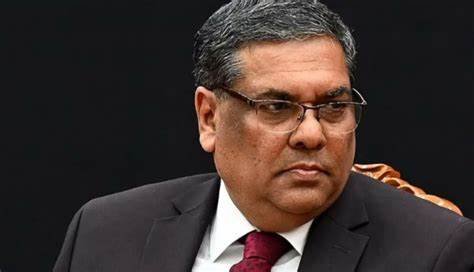Chief Justice of India (CJI) D.Y. Chandrachud has implemented a fresh roster system under which CJI-designate Justice Sanjay Kishan Kaul and recently appointed Chief Justice S.K. Khanna announced key changes in case allocation within the Supreme Court of India. The revised roster prioritizes Public Interest Litigations (PILs), with the first three benches dedicated exclusively to handling these cases, reflecting the Court’s emphasis on addressing matters of public importance more efficiently. The decision marks a significant restructuring aimed at enhancing transparency and ensuring a balanced allocation of cases across the judiciary.
A New Structure in Case Allocation
The Supreme Court of India handles thousands of cases each year, with PILs forming a crucial component of its docket. Public Interest Litigations allow individuals or groups to approach the Court on matters that impact the public at large, such as environmental protection, social justice, and human rights. Given their potential to influence governance and society, PILs have become an essential tool in India’s legal landscape. However, the high volume of such cases has often led to delays, creating backlogs that slow the resolution of pressing issues.
Under the new roster, the Supreme Court’s first three benches, headed by senior justices, will exclusively handle PILs. Chief Justice Khanna has stated that this reorganization will streamline the handling of public interest cases, ensuring they receive the timely attention they require. According to court officials, each bench will include experienced judges well-versed in constitutional and civil law, equipped to assess the broader implications of PILs and deliver judgments with far-reaching impact.
Addressing Case Backlogs
One of the driving forces behind this roster reorganization is the Supreme Court’s ongoing effort to tackle case backlogs. India’s judiciary has been burdened with a high pendency rate, with millions of cases awaiting resolution across all levels. Although the Supreme Court constitutes a relatively small portion of this backlog, the volume and complexity of PILs have strained the resources of the Court, often delaying justice for those seeking it on public matters.
With three dedicated benches focusing solely on PILs, the Court aims to expedite these cases and reduce the strain on other benches. By alleviating the burden of PILs from other benches, this arrangement will allow those benches to focus more efficiently on other categories of cases, including criminal appeals, civil disputes, and constitutional matters. This balanced distribution of cases is expected to optimize the Court’s productivity and enhance access to timely justice.
Ensuring Fairness and Transparency in Case Allocation
Chief Justice Khanna’s decision to implement a specialized roster for PILs has also been lauded as a step toward greater transparency in case allocation. Historically, the allocation of PILs has been subject to criticism, with concerns raised over perceived arbitrariness in the selection of judges assigned to these cases. Critics have argued that the lack of a clear system in allocating sensitive PILs could lead to perceptions of bias or favoritism, undermining public trust in the judiciary.
The new roster, with its structured approach to allocating PILs, addresses these concerns by establishing a clear and predictable system. Court officials have highlighted that the selection of senior and experienced judges to preside over the first three benches ensures that PILs will be handled by justices with the requisite expertise and independence. This structured approach is anticipated to enhance public confidence in the judiciary and reinforce the impartiality of the Supreme Court.
A Focus on Public Interest Cases
The emphasis on PILs underscores the judiciary’s commitment to addressing issues of societal importance. PILs have historically played a pivotal role in shaping public policy and safeguarding rights in India, and the Supreme Court has been instrumental in delivering landmark judgments on matters ranging from environmental protection to women’s rights and welfare. In prioritizing PILs, the new roster system reflects the Court’s recognition of its role as a guardian of public interest and a custodian of the Constitution.
Justice Khanna’s restructured roster is likely to streamline the process of hearing PILs and ensure that they are addressed with the urgency they deserve. By dedicating the first three benches to PILs, the Court can focus more comprehensively on these cases, which often have broader implications for society as a whole. Officials noted that the new system would likely allow the judiciary to tackle public grievances more effectively, leading to timely and impactful judgments that benefit the public at large.
Challenges and Future Prospects
While the new roster system has been met with approval from many legal experts and practitioners, there are challenges that come with this change. Critics have pointed out that, given the limited number of Supreme Court judges, assigning three benches exclusively to PILs could limit resources available for other pressing cases. Furthermore, the increased focus on PILs may create heightened expectations from the public, who may see this as an opportunity to bring more issues of public importance before the Court.
However, proponents argue that the restructured roster is a step in the right direction. They emphasize that prioritizing PILs can drive systemic reforms by spotlighting issues that impact the public and by encouraging the executive and legislature to take timely actions based on judicial recommendations. Additionally, the clarity in case allocation may set a precedent for high courts across the country to implement similar measures, potentially easing the burden on the judicial system at large.
Chief Justice Khanna’s decision to reorganize the Supreme Court’s roster reflects a progressive approach to handling public interest cases. By dedicating the first three benches to PILs, the Supreme Court is reaffirming its commitment to addressing issues that affect the lives of millions of Indians. This structured approach not only aims to reduce case backlogs and increase efficiency but also ensures greater transparency and fairness in case allocation. As the new system is implemented, the Supreme Court’s role as a key driver of public interest reform is likely to strengthen, setting a robust example for the Indian judiciary.

